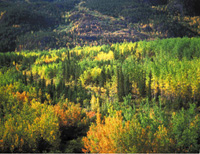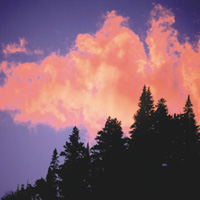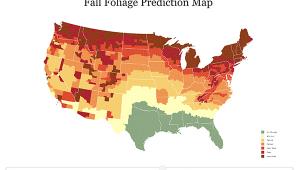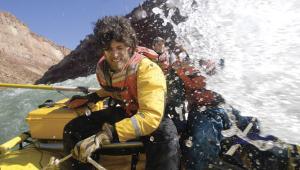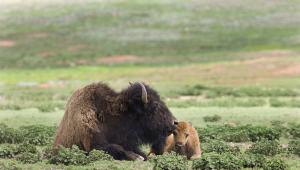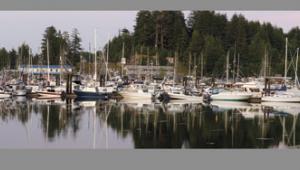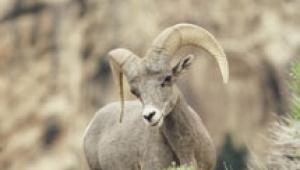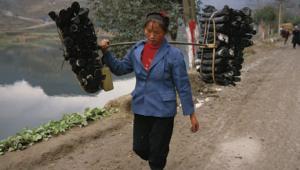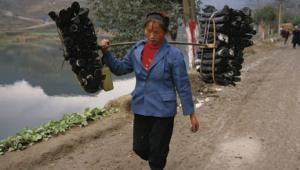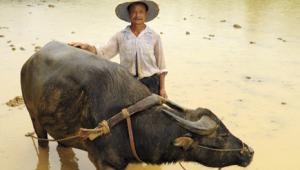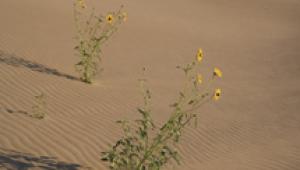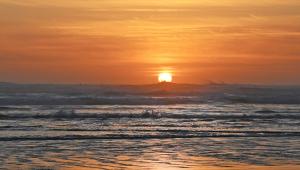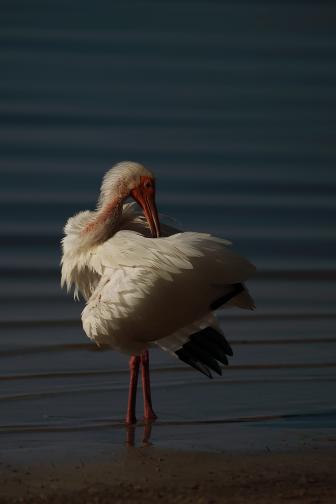A Journey Though Autumn
Following The Color Southwest
We all know the colors of fall, don't we? Golds, greens, oranges, and reds, right? And we all know when fall arrives, right? Sometime after school begins, right? Or does it come around September 21st? Would it surprise you to know that fall arrives in some areas as early as late July, or mid August? We made this discovery for ourselves on an extended driving trip from
Washington state to Alaska, departing on the Monday of the 4th of July
weekend. We were part of an RV caravan consisting of 19 large RVs, driving
our home at the time, a 36 foot Bounder motor home, dragging a Jeep
Cherokee around by the nose. The trip was to be a tad over 60 days...a
long round trip. |
|||
Fall begins
at the top of the world and moves south. When we began our return trip,
it was the beginning of August, and still summer. Fireweed was still in
bloom, but termination dust was beginning to appear on the mountain tops.
(Termination dust is what Sourdoughs, Alaskan locals, call the first signs
of snow. The name refers to the concept that the termination of outdoor
work for the year is close at hand.)
Even as lower forty-eighters, we could sense fall coming. There was something deliciously tangible in the air. The urge to run around, looking for nuts to store, was in the back of most everyone's mind. Shelf stocking was beginning. Tire sales were on the rise. Without ever being told, we got the hint. Winter was coming and it was time for flatlanders to head south. And we learned that fall is definitely not autumn. |
|||
Autumn is a 911/3 day long season. The beginning is defined by a point on the solar calendar, when the earth is in a equilateral position to the sun. Fall begins when you need to put on a sweater, even though the sun is shining and the sky is clear. When a 10 mile an hour breeze will penetrate right to the bone. When a can of beer will go flat before it can warm up. The colors of fall insofar as foliage goes is occasioned by the death of the leaves. Conversely, the bright spring colors are occasioned by a need for reproduction. Fall is somber. Fall is impending doom. Spring is bright. Spring is displaying for reproduction. When we left Alaska, we could see that the deciduous (leafy) trees were losing some of the strength in their green leaves. An occasional tree would be turning colors, but those were still unusual. Two full days of driving got us down into the Yukon. We and the seasonal color movement south met at a tiny river resort on the main highway. |
|||
The trees had already turned a bright yellow, and the conifers (needle-bearing trees) were getting darker colored. The streams were as low as they were going to get. The sun was rapidly lowering in declination, making for some awesome sunsets. If we had been able to keep up with the fall line, we would have been able to get to Tennessee in time for the colors there. As it was, we had been there the year before. The color line hit that year about the end of September. When photographing in the Great Smoky Mountains National Park, smaller trees had turned a brilliant yellow, while the larger surrounding trees were still a lush green. Fall colors aren't necessarily a complete tree or forest. Telephoto isolations show the beauty as well. I also used my Mamiya RZ, with
a fisheye lens (37mm). In a vertical format, the lower edge of the image/lens
is kept parallel with the ground and the upper edge of the lens actually
covered enough to encompass the entire tree's umbrella. I particularly
like the look of tree trunks semi-intertwined as they reach skyward. |
|||
Fire Season A stray cloud, brushing a high rocky mountain at treetop altitude lit only by a deeply setting sun creates what's known as alpenglow. Alpenglow is the final, last light from the sun at it's lowest point in the horizon. As the sunlight must travel much farther through the atmosphere, the color is often a fiery red. I use all my lenses on a trip like this. At the time I had five lenses, from a 500mm APO to a 37mm fisheye. And a 1.4 extender. A potential of 10 different setups! |
|||
I like to shoot quick, running
off as many exposures as I think is necessary, using as many differing
setups as I can think of. I can separate the wheat from the chafe later
on my light table. In this way, I've gotten many publishable images
out of the same scene, but with ever-changing lighting. |

